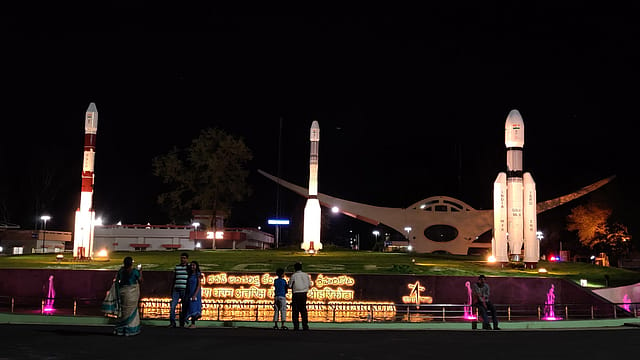ISRO building human flight capability to promote space tourism: Govt
ADVERTISEMENT

The Indian Space Research Organisation (ISRO) is in the process of developing indigenous capabilities towards space tourism through the demonstration of human space flight to Low Earth Orbit, Union Minister of State for Science and Technology Jitendra Singh said on Thursday.
In a written reply to a question in the Parliament today, Singh said the Indian National Space Promotion and Authorisation Centre (IN-SPACe) also seeks to promote active participation of the private sector in carrying out end-to-end space activities, which include space tourism as well.
IN-SPACe has been created as a single window agency, under Department of Space, to promote, handhold and authorize the activities of private sector in space domain, including those by young entrepreneurs and students interested in the field of space science," the minister says.
The Department of Space is in the process of drafting a comprehensive, integrated space policy, which shall provide direction to the activities of private Indian space industry, Singh adds.
"IN-SPACe will come up with mechanisms to enable sharing of technical facilities and expertise available across ISRO Centres with private entities," he says.
Responding to a question on space diplomacy, the minister said the Indian Space Research Organisation pursues international cooperation and relations with 61 countries in varied domains of space activities.
January 2026
Netflix, which has been in India for a decade, has successfully struck a balance between high-class premium content and pricing that attracts a range of customers. Find out how the U.S. streaming giant evolved in India, plus an exclusive interview with CEO Ted Sarandos. Also read about the Best Investments for 2026, and how rising growth and easing inflation will come in handy for finance minister Nirmala Sitharaman as she prepares Budget 2026.
This comes days after Indian space-tech startup Agnikul announced the opening of its Rocket Factory - 1 - India's first-ever rocket facility dedicated to 3D printed rocket engines at scale.
The IIT Madras incubated startup became the first Indian company to sign an agreement with ISRO in December 2020. The agreement, signed under the IN-SPACe initiative, sanctioned Agnikul the access to the Indian space agency's expertise and facilities to build Agnibaan - a highly customisable, 2-stage launch vehicle, capable of taking up to 100 kg payload to orbits around 700 km high (low Earth orbits).
Meanwhile, the India Meteorological Department (IMD) is exploring the possibilities to deploy drones to gather atmospheric data from various locations, in place of weather balloons, according to Union minister Jitendra Singh.
In a written reply in the Lok Sabha, Singh informed that an inter-departmental committee has been constituted by IMD to conduct studies. In order to explore the technical feasibility of upper air boundary level data sensing, an invitation to industry and academia to demonstrate experimental drone-based radio-sounding on No Cost No Commitment (NCNC) basis has been released by the Ministry of Earth Sciences.
Currently, radio sounding is the method in practice to measure vertical profile of physical properties of the upper air atmosphere and this is done by launching a transmitter interfaced with sensors aloft a weather balloon.
Although weather balloons are widespread in use since long, it poses a limitation to successful recovery of the sensor and also limits the use of more sophisticated and widespread sensors due to underlying implicit cost involved.
With the advent and sophistication in the unmanned aerial systems commonly known as drones, IMD is exploring the possibility to replace balloons with drones in gathering upper air observations. This new technology is expected to make the sensors recoverable and reusable thus likely to benefit IMD.
